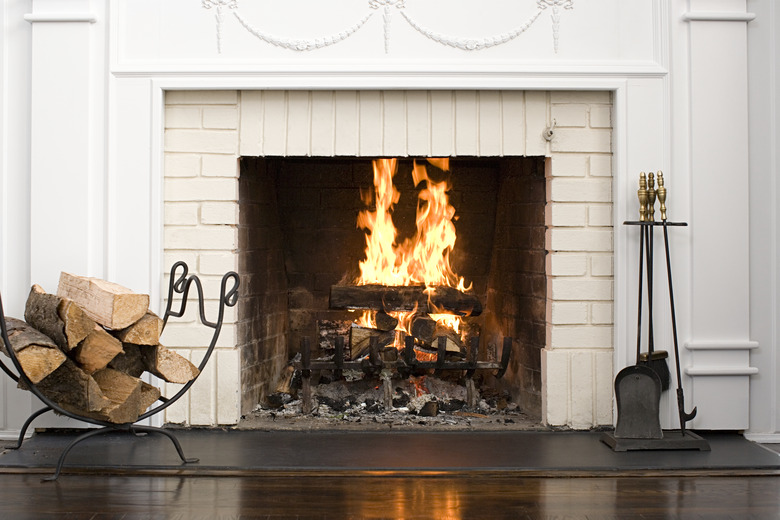How To Use My Wood-Burning Fireplace In My House
We may receive a commission on purchases made from links.
Visions of cozy, crackling fires in the fireplace can quickly be dashed if you don't know how to use your wood-burning fireplace safely. If you haven't used the wood-burning fireplace in your house yet, you need to do some fireplace cleaning and safety checks before grabbing your kindling and logs. Starting the fire isn't difficult once you check off the prefire tasks.
Do a Safety Check
Do a Safety Check
Wood-burning fireplaces should be cleaned by a certified chimney sweep at least once per year, ideally before winter hits and you use the fireplace for the first time. They'll inspect the fireplace and chimney for damage that needs to be repaired. They also clean out built-up creosote on the walls of your chimney to reduce the risk of a dangerous chimney fire.
Gather Safety Gear
Gather Safety Gear
Have safety gear nearby in case the fire gets out of hand. Start by checking your smoke alarms and ensuring you have a working carbon monoxide detector in the home. Keep a fire extinguisher in the same room as the wood-burning fireplace in case the flames stray outside the firebox.
The area around the fireplace is also important. Check for anything flammable like a stack of magazines, throw blankets, or a rug that's within 3 feet of the fireplace and relocate it. Have your fireplace screen ready to go in front of the fireplace once you start the fire.
Prepare the Wood-Burning Fireplace
Prepare the Wood-Burning Fireplace
Your fireplace damper is a metal plate in your fireplace flue that moves. It needs to be open whenever you're burning a fire to allow the smoke and ash to go up the chimney instead of entering your home. Open and close it a few times the first time you use the fireplace to make sure it's working correctly. Then, leave it in the open position before you build your fire.
Another preparation step is to clear out the old ashes in the fireplace. Cold ashes are easy to clean out by either sweeping or vacuuming them from the fireplace.
Sometimes you need to prime your flue, which means you warm it up before you start the fire. This is most common on cold days when your chimney is on an outer wall because it can be filled with cold air. If you light the fire without priming it, the cold air in the chimney will likely push the smoke back into your room. To prime the flue, simply light a roll of newspaper, being careful not to burn yourself, and hold it near the open damper. After a few minutes, the heat from the newspaper fire should clear out the cold air.
Start the Fire
Start the Fire
Dry, seasoned wood is ideal for burning in your fireplace. This cuts down on the amount of soot and smoke it creates, which keeps the air cleaner in your home. Grab large, medium, and small pieces of wood for kindling.
You can build fires in many different ways, so test out different methods. One option starts with the largest logs on the bottom, perpendicular to the opening, followed by a row of medium-sized logs on top using alternating directions. Top the pile off with very small, very dry pieces that will light quickly. Start the fire at the top by lighting the small pieces and allowing the fire to work its way toward the largest logs at the bottom.
Burn Wood Safely
Burn Wood Safely
Add more dry wood to the fire as needed to keep it going. Never leave the fire burning in the fireplace if you need to leave.
When you're almost done with the fire, stop adding logs to let it burn out. Using a fireplace poker from your fire tool set, spread out the remaining wood to help it cool down faster. You can scoop cool ash on the remaining embers to help extinguish them. Sprinkling baking soda over the embers can also help put them out.
